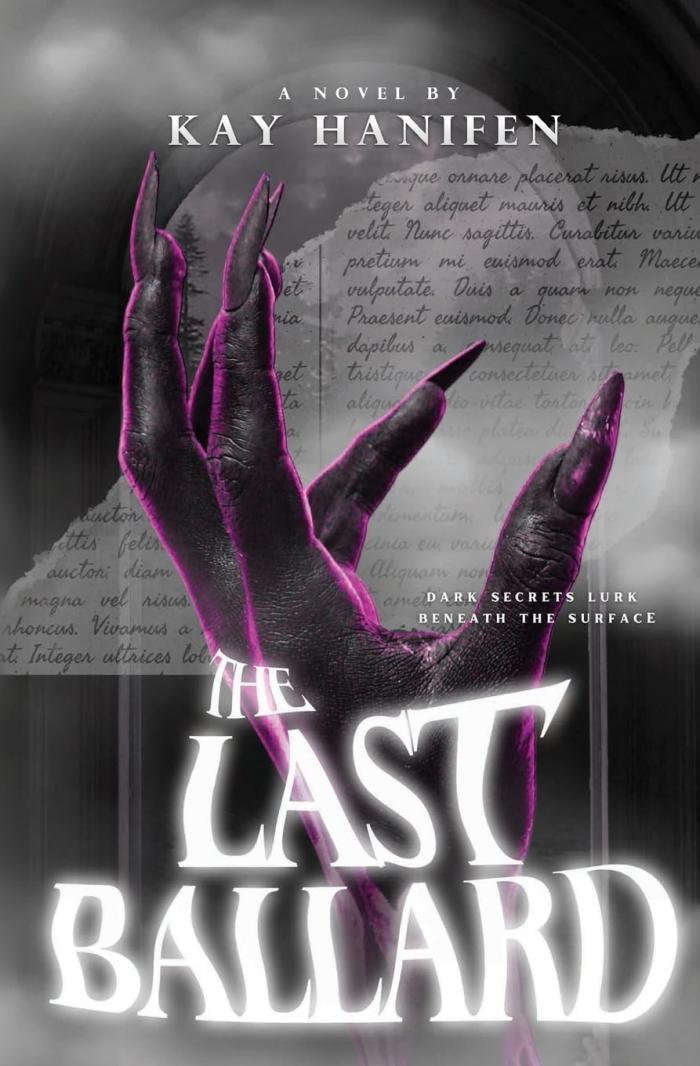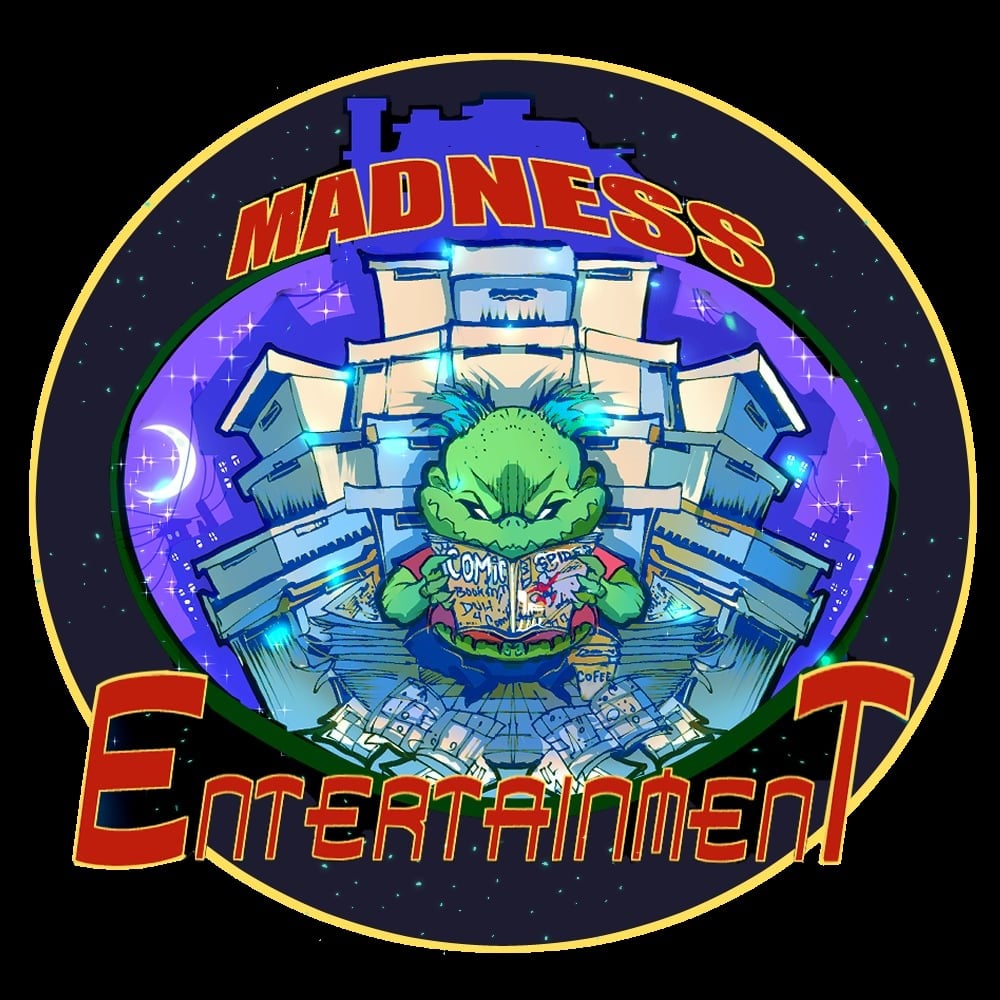Kay Hanifen's Debut Novel 'The Last Ballard' Haunts In So Many Ways
FTC Statement: Reviewers are frequently provided by the publisher/production company with a copy of the material being reviewed.The opinions published are solely those of the respective reviewers and may not reflect the opinions of CriticalBlast.com or its management.
As an Amazon Associate, we earn from qualifying purchases. (This is a legal requirement, as apparently some sites advertise for Amazon for free. Yes, that's sarcasm.)

Everyone is haunted in one way or another. If not by actual spirits, than by memories, regrets, failings, near-misses and might-have-beens. The trauma of abuse, too, can haunt a person for a lifetime. There are many ways to deal with our private ghosts; some self-medicate via drugs or alcohol, others try to flee, but the bravest among us face their traumas through therapy, support groups, or counseling. Yet while confronting past hurts may ultimately heal, the journey towards catharsis can be perilous. Excavating psychological wounds is akin to opening Pandora’s Box; once the metaphorical phantoms are loose, they are difficult, if not impossible, to put back.
One author willing to explore those darker recesses of the human heart is Kay Hanifen, whose debut Miravalle Books novel, The Last Ballard, is a vivid study of generational sin set amid a spooky supernatural Gothic backdrop.
Since well before the American Revolution, the Ballard family has lived in old-money opulence in the tiny New England town of Cherub Cove. A line of guileful connivers and robber barons, their power and influence is on par with the Rockefellers or Vanderbilts. Rhiannon ‘Rhea’ Ballard is the final blood relation of the family’s long lineage; as a child, both of her parents were killed in a tragic boating accident on the lake behind the Ballard mansion, and Rhea was subsequently raised by her authoritarian paternal grandparents, Bert and Astrid. Isolated from her peers due to home-schooling and a victim of constant emotional, mental, and physical abuse, Rhea’s miserable, sequestered existence is complicated by the presence of several ghosts dwelling in the mansion. There’s the sad woman who cries on the foot of her bed each night, and the little girl fascinated with flowers who lives in the attic tower Rhea’s grandparents periodically imprison her in. Most menacing, however, is the spirit who emerges from the lake wearing her mother’s face.
After a then-teenage Rhea meets and falls in love with a spunky local girl named Eliza at a party, Bert and Astrid exact Draconian punishment for what they view as an unnatural relationship; locking her in the tower for four months, Rhea’s only chance for survival is to escape out the attic window. On her own for six hardscrabble years thereafter, Rhea scratches out a meager existence, determined to forge a destiny free from the oppressive Ballard name. When she receives word that Bert and Astrid have both died, however, Rhea is drawn back to Cherub Cove for their funerals. Shocked to learn that she’s the sole inheritor of the family fortune, she’s forced to act as the mansion’s caretaker while it’s under probate to put her grandparents’ affairs in order. There Rhea hits it off with Morgan Reyes, the Ballard’s cook and her grandparents’ former caretaker; the two become close, but Morgan possesses her own grave secret involving a stalker ex-boyfriend who was found floating in the mansion’s lake years earlier. Delving into her family’s sinister secrets, Rhea inadvertently reawakens the ghosts of the property, and now she, Morgan, and Andy Higgins, the skeptical groundskeeper, have to piece together the mystery of her ancestor’s poisonous crimes before they’re all taken by the vengeful elemental sprite that’s vowed never to rest until the last Ballard is dead.
As with the greatest fiction, The Last Ballard can be enjoyed on multiple levels. In its simplest form, the novel grants its audience welcomed escapism, and the long-simmering climax literally and figuratively ignites with thrills. Yet serious and important themes about family, friendship, loss, betrayal, forgiveness, acceptance, and the misuse of power are also explored. Hanifen’s dexterous and kinetic prose so effectively conveys the intricate spectrum of human experience that each carefully-chosen word pulls the reader deeper into the story. Her clear vision, wry wit, and gift for fully rendering a character's motivations, desires, and insecurities cut to the heart of every scene. This is seen nowhere more clearly than in Rhea; as a lead, she’s complicated, believable, and realistic. Signs of that complexity are her sometimes conflicting feelings; raised in a virtual social vacuum, victimized and imprisoned, Rhea experiences understandable hatred for Bert and Astrid, yet still acknowledges affection for them despite their wicked behavior. Similarly, her history with Eliza arouses contradictory sentiments: ever since running away, Rhea daydreamed of reuniting with her first and only love, but when the moment inevitably arrives her longing crashes head-on with reality in the most painful ways.
In contrast, the burgeoning romance between oft-prickly Rhea and the tender-hearted Morgan is by turns sweet, funny, and endearing. Unlike many books where a relationship seems forced, the coupling here progresses so organically it’s impossible not to find charming, and their lively back-and-forth banter provides the novel’s best dialogue. As the primary supporting character, Morgan is Rhea’s polar opposite: she’s confident, talented, caring, and descended from a close-knit, supportive family, but she’s also tough beyond all measure. Morgan saw the intolerable sides of Bert and Astrid first-hand, and believes Rhea’s tales of abuse when many wouldn’t have due to the Ballard’s demigod status. With her own past marred by the suspicious death of her ex—one of Cherub Cove’s favorite sons—Morgan became a source of turgid local gossip, and as a result suffered the same pariah-like alienation that befell Rhea.
When it comes to the supernatural side of the story, Hanifen pulls no punches. Any fan of detective fiction, ghost stories, or folklore won’t be disappointed by the intrigues in The Last Ballard. As the novel progresses its narrative builds upon the framework of classic Gothic literature (a centuries-old crumbling mansion, a decaying family with murderous secrets, madness, a distressed damsel plagued by spectral ills); indeed, Rhea even references Jane Eyre on several occasions. But there’s also a noticeable fairy tale aspect to The Last Ballard: like Rapunzel locked away in her tower, Rhea must throw off the shackles of her former self in order to find the new, prosperous future that’s within her grasp.
Filled with danger, humor, horror, and heart to spare, The Last Ballard is a superb novel, a stunning debut, and quite simply the best book I’ve yet reviewed in 2025. For those reasons and many more I feel compelled to bestow it the full 5 (out of 5) on my Fang Scale. I can’t wait to see what spirits Hanifen conjures next.


